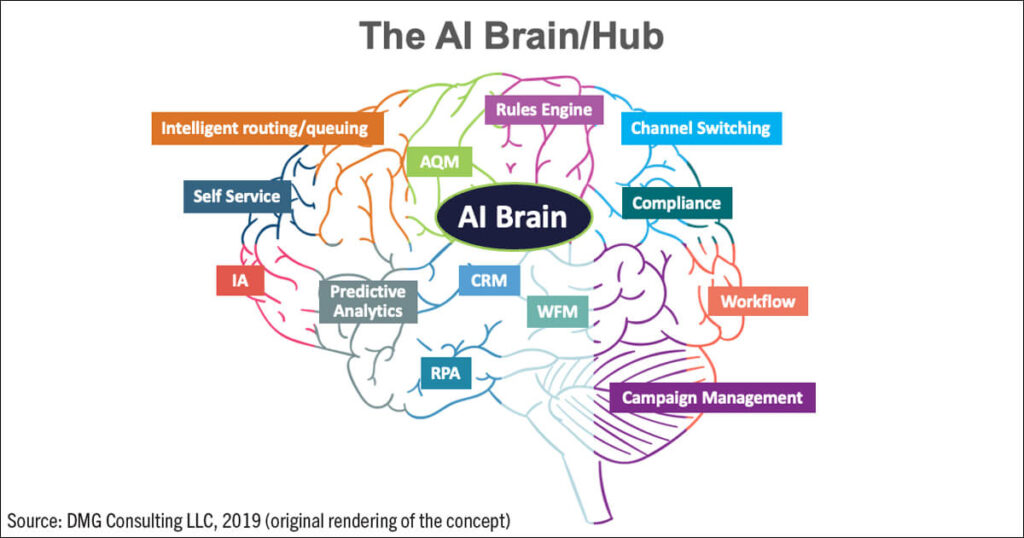AI: The Future Brain of Contact Centers

View this article on the publisher’s website.
Debates about the power and danger of artificial intelligence (AI) abound, but both the issues and practical realities are nuanced. No person or government is going to stop the AI revolution, and regulating it is going to be very difficult. Trying to limit AI is akin to limiting human ingenuity, and that will not (and should not) happen.
While the pundits are concentrating on the potential dangers of AI, there is a strong positive side to the equation: AI is and will continue to drive tremendous advancements and innovation in most aspects of our lives, including healthcare, financial services, manufacturing, telecom, education, government, transportation, and many other areas. But the benefits do not come without risks, and as with anything new and innovative, it will be up to society to ensure that AI is used properly.
AI is going to make very significant contributions to many areas of business, including contact centers. The more complex the operating environment, the larger the potential benefits and contributions from applying AI. Contact centers are indeed highly complex; they can use more than 45 different interoperable systems and applications to support both live and automated agents. But the technology is just one piece of the challenge.
In service-oriented contact centers, for instance, live agents are trained to respond to what could be hundreds of different types of inquiries. When it comes to sales, there is typically a smaller number of products, but it’s still challenging to come up with the most effective method of handling objections, as this must be customized to the needs of each prospect. Collections agents may deal with a more limited set of activities, but it’s very difficult to convince customers to part with their money while complying with government regulations. Then there is the world of field service and dispatch, where there are no limits on the ways products can malfunction, break, or be used improperly.
These examples should provide some appreciation of the challenges in building and maintaining a high-functioning contact center environment. While an effective contact center executive should be able to gain insights into the performance of their operation from 10 to 20 key performance indicators (KPIs), keeping everything working properly is challenging even under the best of circumstances.
This is where DMG Consulting’s concept of the AI brain (or hub) comes in. Imagine having a highly intelligent device that controls when each system “fires” and the information that it provides as the core component (and decision maker) of your contact center. This AI brain must perform what will likely be millions of mathematical calculations in nanoseconds (or less) while basing its decisions on an ever-changing set of data. This description makes it clear why a human (or group of people), no matter how smart, cannot always make the right decisions to enable their agents and systems to consistently and cost-effectively deliver an outstanding customer experience (CX). For example, an AI-enabled real-time adaptive routing engine gets smarter and does a better job with each interaction; however, this makes it next to impossible for the workforce management (WFM) solution to deliver an optimal schedule, as it doesn’t know what the routing engine is going to do next. The AI brain will not know either, but it can recalculate on the fly and initiate the right instructions to properly schedule, staff, and align the department. It’s one thing to do this with two systems, such as the routing engine and WFM solution, but imagine the challenge of keeping 45-plus contact center systems and application working in sync. It’s impossible without an AI brain.
DMG Consulting introduced the concept of the AI brain to the market in early 2019. At that time, most agreed with the concept, as the need for new tools to improve the performance of highly complex and fast-paced operating departments like contact centers was evident, but few knew how it would be delivered. However, as the name depicted, it was going to be an AI-based capability with the power to transform and self-improve. There is no stopping the innovation pouring into contact centers (and other departments), but the challenge is in making the right investments and leveraging the technology for the good of customers, employees, companies, and the bottom line.
